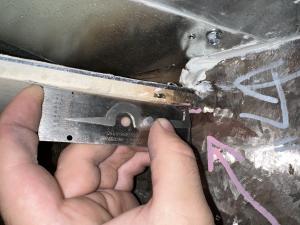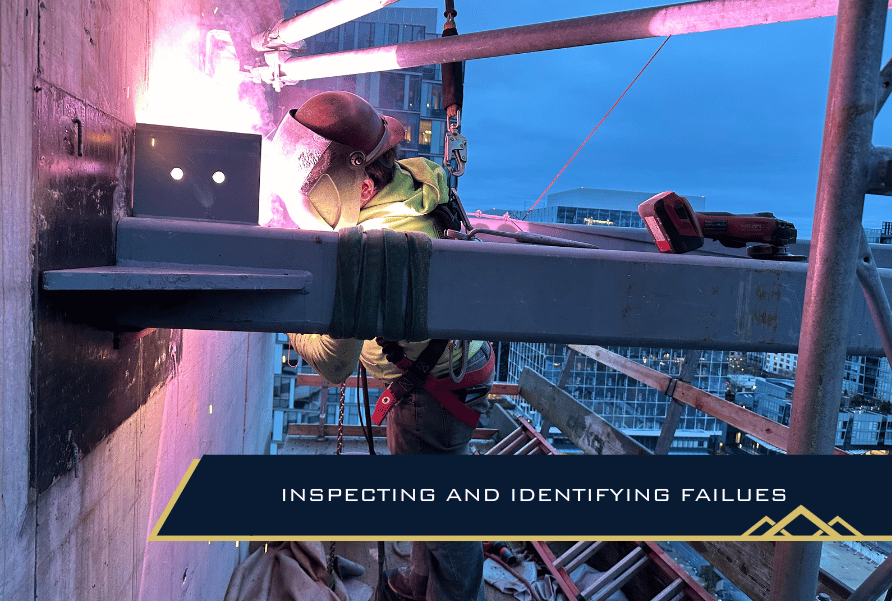Comprehending the Standards for Welding Inspection Gilbert Arizona: A Full Summary
Wiki Article
A Comprehensive Guide to Welding Assessment: Recognizing Specifications, Techniques, and Best Practices for Quality Assurance
Welding assessment plays a crucial role in guaranteeing the structural honesty and safety and security of welded elements, requiring a comprehensive understanding of market criteria such as those established by AWS and ASME. Numerous assessment techniques, consisting of visual and ultrasonic screening, are used to identify possible flaws that can compromise quality. Applying ideal practices can considerably boost operational reliability and foster count on among clients. As we explore these crucial components, it becomes apparent that the effects of welding assessment expand much beyond conformity, inviting a more detailed exam of just how these processes shape sector criteria and techniques.Importance of Welding Assessment
Welding examination plays a critical role in making certain the stability and safety and security of bonded frameworks. It is a vital process that confirms that welds adhere to predefined specifications, which is important in different sectors, consisting of construction, automobile, and aerospace. By carrying out comprehensive evaluations, prospective defects such as fractures, incomplete combination, and porosity can be determined early, stopping devastating failings that could result in crashes or expensive repair work.The value of welding assessment extends past mere compliance with policies; it additionally cultivates count on with stakeholders. Customers and regulative bodies anticipate guarantee that the frameworks they rely upon are constructed to stand up to functional stress and anxieties. Effective welding examination practices add to long-lasting longevity and efficiency of the structures, inevitably leading to lowered maintenance costs.
Furthermore, welding inspection promotes a culture of top quality within organizations, urging adherence to ideal methods and continuous improvement. By incorporating evaluation procedures into the welding workflow, companies can enhance their credibility and establish themselves as leaders in quality control. To conclude, the value of welding examination depends on its capability to protect lives, guarantee structural integrity, and copyright market standards, making it an indispensable aspect of welding procedures.
Trick Market Requirements
Making certain conformity with key industry criteria is essential for maintaining the high quality and safety and security of bonded structures. Various organizations establish these criteria to promote ideal practices in welding and inspection - Welding Inspection Gilbert Arizona. Among the most identified are the American Welding Society (AWS) and the American Culture of Mechanical Designers (ASME), which give comprehensive standards and specifications for welding processes and assessment standardsAWS requirements, such as AWS D1.1 for structural welding, outline requirements for materials, style, and testing to guarantee the honesty of welds. In a similar way, ASME codes, including ASME Section IX, regulate the credentials of welders and welding procedures, making certain constant top quality in industrial applications. Internationally, the ISO 3834 standard highlights high quality needs for combination welding, offering a structure for companies to show conformity with worldwide finest techniques.
Compliance with these requirements not only improves the reliability of bonded frameworks however likewise reduces risks connected with structural failings. Furthermore, adherence to market requirements is commonly a requirement for regulatory authorizations and can significantly affect project specifications. Eventually, understanding and implementing these essential requirements are crucial for effective welding inspection and quality control.
Inspection Techniques Introduction
Reliable welding examination counts on a range of methods created to examine the quality and stability of welds. These methods can be extensively categorized into non-destructive and damaging screening (NDT) approaches. Non-destructive testing techniques, which are commonly chosen in the market, enable for the assessment of welds without jeopardizing the integrity of the product.

Amongst the most generally used NDT methods are aesthetic assessment, ultrasonic testing, radiographic screening, and magnetic bit screening. Visual evaluation is commonly the first step in the analysis process, allowing assessors to recognize surface area blemishes and evaluate weld bead profiles.
Each method has its very own advantages and constraints, making it important for inspectors to select one of the most appropriate technique based on the particular requirements of the job, the materials entailed, and the urgency of the welds being inspected. This cautious selection makes sure extensive analyses and maintains safety and security and top quality criteria in welding procedures.
Common Flaws and Their Ramifications
A thorough understanding of usual problems in welds is crucial for preserving architectural stability and safety and security in bonded constructions. Welding defects can significantly jeopardize the mechanical residential or commercial properties of the joint, leading to failings that could endanger both workers and equipment.Usual problems consist of porosity, which manifests as tiny gas pockets caught in the weld steel, weakening the general structure. Cracking is an additional widespread problem, typically arising from fast cooling or inappropriate joint design, leading to stress concentrations that can lead to tragic failures. Incomplete fusion happens when the weld metal fails to appropriately click over here bond with the base material, developing weak factors that may cause splitting up under tons.
Other noteworthy flaws consist of undercutting, where the weld grain wears down the base steel, and slag inclusions, which can hinder the weld's stamina. Each of these defects has specific implications; for example, porosity can reduce ductility, while fracturing directly affects tensile strength. Recognizing and comprehending these defects throughout evaluation is necessary for carrying out corrective procedures and guaranteeing conformity with sector criteria, eventually guarding the structural stability of bonded assemblies.
Finest Practices for Quality Control
Carrying out best methods for quality guarantee in welding straight from the source procedures is crucial for accomplishing ideal outcomes and lessening problems. One crucial method is the facility of clear welding procedures that follow industry standards and specs. These procedures ought to consist of comprehensive guidelines regarding product selection, joint preparation, and welding methods to ensure consistency and top quality.Routine training and accreditation of welding workers are additionally crucial. Skilled welders who recognize the importance of quality guarantee are more most likely to generate audio welds. In addition, implementing a durable evaluation program, including both visual and non-destructive testing (NDT), can aid identify issues early while doing so, permitting timely restorative actions.

Lastly, cultivating a society of top quality within the organization urges workers to focus on high quality in their work. By sticking to these best practices, companies can boost the stability of their welding processes, inevitably bring about enhanced product top quality and minimized expenses linked with rework and repair services.

Conclusion
In final thought, welding examination plays an essential function in ensuring the stability and security of bonded structures. By carrying out best techniques, companies can improve dependability, minimize maintenance costs, and cultivate depend on amongst clients, inevitably adding to successful welding procedures.Additionally, welding evaluation advertises a culture of quality within companies, motivating adherence to best practices and constant renovation. In final thought, the importance of welding inspection lies in its capability to secure lives, ensure structural dependability, and copyright market criteria, making it an important aspect of welding procedures.
Amongst the most recognized are the American Welding Society (AWS) and the American Society of Mechanical Designers (ASME), which supply detailed guidelines and requirements for welding processes and assessment requirements.
Inevitably, understanding and applying these essential requirements are necessary for efficient welding evaluation and high quality assurance.
Effective welding evaluation depends on Visit Website a variety of methods designed to assess the top quality and stability of welds.
Report this wiki page